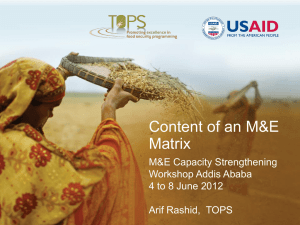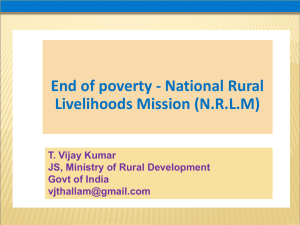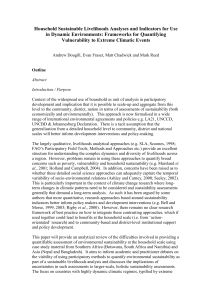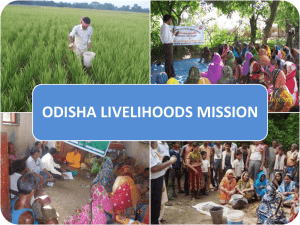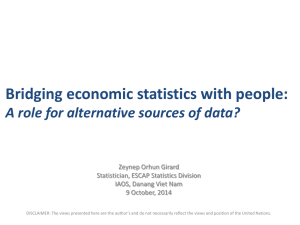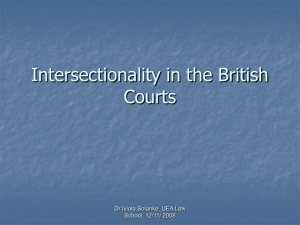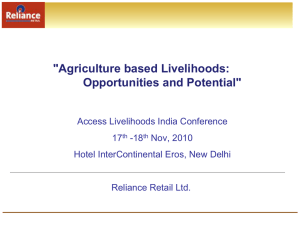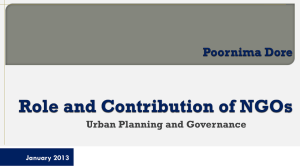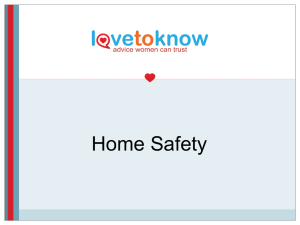powerpoint,ppt,presentation,communications,branding,brand
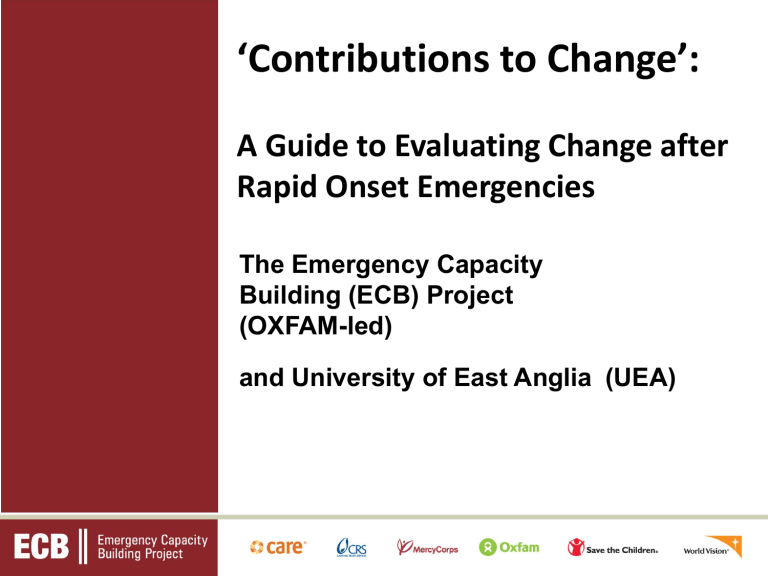
‘Contributions to Change’:
A Guide to Evaluating Change after
Rapid Onset Emergencies
The Emergency Capacity
Building (ECB) Project
(OXFAM-led) and University of East Anglia (UEA)
An Applied Research Partnership
• Oxfam and UEA (equal partners); Steering
Committee with ECB members.
• Collaboration aims research, pilot and publish a guide to support NGOs measure
‘contribution to change’ resulting from their interventions in rapid onset emergencies.
• Builds on ECB Good Enough Guide to
Impact Measurement and Accountability
(which did not provide much guidance on
‘impact’!)
Why talk about measuring
‘contribution to change’
• Needed a way to talk about ‘impact’ that was simple, and realistic.
– Difficult to measure impact in emergency settings.
• Demand for NGOs/UN to demonstrate impact but few examples of impact evaluations of humanitarian responses to rapid on-set emergencies.
• ECB partners expressed that they needed clearer guidance to assist them measure impact quantitatively and qualitatively.
• Rather than get stuck in argument about ‘rigorous’ impact’ decided to focus on developing and testing methodology to help document evidence of
‘contributions’ to change?
Approach
• Aims to help agencies evaluate their ‘contribution to change’
(+/-)
• Focused on changes to lives of affected populations
(household/community)
• Influenced by the livelihoods approach
• Informed by work of others - ALNAP, INTRAC, Tufts etc.
• Recognizes that external aid is only one (not always the most significant) of dynamics after a disaster.
The Methodology
• Designed to be robust enough to collect credible evidence of a ‘contribution to change’ but simple enough for field staff to use (with supervision).
• Draws on range of well known qualitative and quantitative tools to measure change against baseline.
– Household survey
– Focus group and/or group interviews, KI interviews.
– PRA techniques
• After first pilot decided to focus on Retrospective method only to establish baseline.
• A work in progress… not in a position to make recommendations.
Retrospective Methodology
• If no baseline is already established, this methodology will enable the collection of data to best measure changes for households.
• Assumes that evaluation field work will take place no more than 12-15 months after the disaster has occurred
(is 15 months too long?).
• Data collection includes information on livelihoods and household assets to reconstruct a baseline on situation before disaster / how the situation has changed since.
• Triangulate to increase reliability.
Why a Household Approach?
• Impacts recognised by affected populations when they result in changes in daily activities and livelihoods of households.
• As livelihoods differ within communities, need to study impacts at the household level to see how livelihoods have changed
Contents of the Guide
• Guidance on how to sample data, train staff in data collection
• Household and community surveys
• Qualitative and quantitative studies
• How to process and analyse findings
• Single-agency and multi-agency evaluation contexts
Field Testing
• Have competed 3 pilot studies. Criteria:
– Partner on ground to help with logistics, access, data collection
– Significant ‘event’ in previous 6-15 months.
– Significant ‘response’ to emergency.
• Bihar, India, November 2011 (Floods in July/August ‘11)
• Guatemala, in March 2012 (Hurricane in Oct ‘11)
• Sri Lanka in May 2012 (Floods in Dec ‘10-Feb ‘11)
• Data analysed in field by partner organisations
– Re-analyzed at UEA following
• Once the guide has been drafted, a final field test will be undertaken.
Kosi River,
Madhubhani District,
Bihar, 2011
Advantages of ‘Contribution to Change’?
• Hopefully useful in contexts where ‘rigorous impact evaluation’ is not feasible, affordable, ethical.
• Household and ‘livelihoods’ focus may avoid silo-effect of sectors or clusters making changes to the lives of affected populations central to evaluation of NGO contributions.
• Provides techniques to establish a retrospective baseline, as reality of most emergencies is baseline information from before the event is not easily available.
• Assumes humanitarian assistance provided by external actors is only one part of the change story - captures communities’ own coping mechanisms.
• But the ultimate test will be whether others find it useful.
Challenges
• No such thing as a typical rapid onset emergency! Has made selecting pilot studies very difficult.
• Balance between simplicity and rigour is hard to get right.
• Balance between flexibility and structured guidance tricky.
– (The guide needs to flexible to be adjusted to accommodate the unique features e.g. event characteristics, gender dynamics, livelihood systems etc. of each site.)
• The logic, rationale and utility of the approach must be clear to multiple agencies and users with varying mandates and levels of expertise.
• Need to clarify how approach complements can be integrated with existing initiatives (e.g. Sphere).
• Questions of scale.
For further information contact:
Dr Vivien Walden: v.walden@oxfam.co.uk
Dr Roger Few: r.few@uea.ac.uk
Daniel McAvoy: d.mcavoy@uea.ac.uk
Dr Marcela Tarazona: m.tarazona@uea.ac.uk


